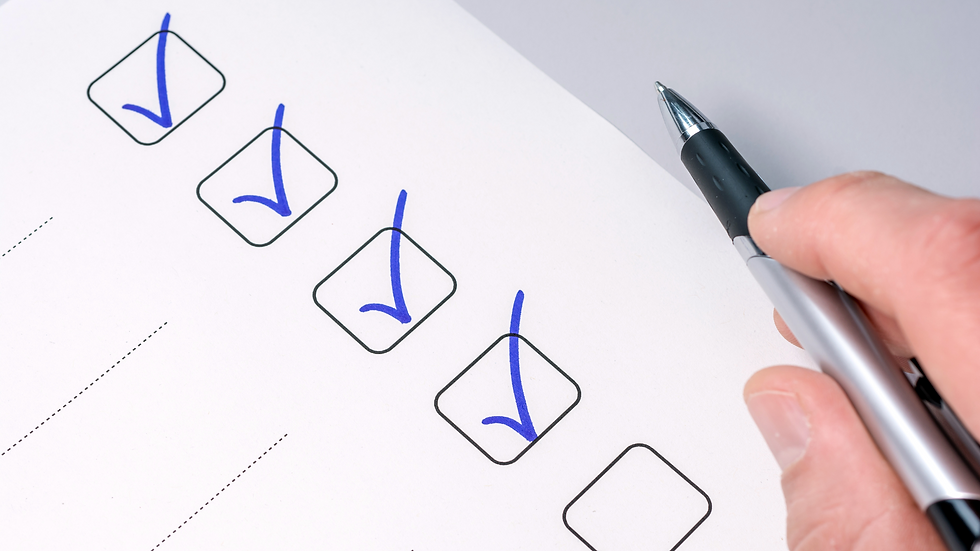SMARTER Goals for Leaders: How to Set and Achieve Meaningful Milestones
- Cindy Copich

- Aug 5
- 4 min read

Leaders are responsible for guiding their teams toward success, but without clear, structured goals, even the best intentions can fall short. That’s where SMARTER goals come in.
SMARTER goals—Specific, Measurable, Achievable, Relevant, Time-Bound, Evaluate, and Revise —provide a framework for setting clear objectives that drive personal and professional growth. By using this approach, leaders can improve decision-making, accountability, and team performance while staying aligned with long-term success.
In this blog, we’ll cover:
What SMARTER goals are and why they matter for leadership
How to create SMARTER goals for yourself and your team
Examples of SMARTER goals in leadership development
Tips to stay on track and achieve your goals
What Are SMARTER Goals?
The SMARTER goal framework ensures that objectives are well-defined and actionable. Each goal should meet the following criteria:
🎯 Specific – Clearly define what you want to achieve. Avoid vague goals.
📊 Measurable – Set criteria to track progress and determine success.
✅ Achievable – Make sure the goal is realistic and attainable.
🔗 Relevant – Align goals with broader company or leadership objectives.
⏳ Time-Bound Set a deadline to maintain focus and motivation.
🔍 Evaluate – Review progress and reflect on results.
✏️Revise – Make adjustmens and improvements.
Example: Instead of saying, “I want to be a better leader,” a SMARTER goal would be:
“I will complete a leadership training program within the next six months and implement three new strategies to improve team communication.”
This goal is specific (leadership training), measurable (three new strategies), achievable (a structured course), relevant (improving leadership skills), time-bound (six months), evaluate (what worked, what didn’t?), revise (what will you change moving forward?).
Why SMARTER Goals Matter for Leaders
As a leader, you’re constantly juggling responsibilities—coaching employees, making strategic decisions, and ensuring long-term success. Without clear goals, it’s easy to lose focus or become overwhelmed. SMARTER goals help leaders:
Stay focused and accountable
Drive professional growth and team success
Improve decision-making and time management
Align team efforts with company objectives
Foster a culture of goal-setting and achievement
Demonstrate learning from mistakes
Research shows that people who set specific goals are 42% more likely to achieve them! (Harvard Business Review)
How to Create SMARTER Goals for Leadership Development
1. Identify Areas for Growth 🔍
Start by assessing your strengths and challenges. Ask yourself:
What leadership skills do I want to develop?
What challenges do I need to overcome?
How can I better support my team?
2. Write SMARTER Goals That Align with Your Vision 📝
Ensure your goals are aligned with your leadership role and the overall mission of your organization.
Example SMARTER Goal: “I will enhance my conflict resolution skills by attending a workshop within the next three months and applying at least two techniques in team discussions.”
Specific – Improve conflict resolution
Measurable – Attend a workshop and apply two techniques
Achievable – A realistic skill-building approach
Relevant – Enhances team communication
Time-Bound – Completed within three months
Evaluate – How did you do implementing the two techniques
Revise – What will you do diferrently
Pro Tip: Break large goals into smaller milestones to track progress.
3. Set SMARTER Goals for Your Team 📊
As a leader, you’re also responsible for guiding your team toward success. Use SMART goals to:
Improve team collaboration
Increase productivity and efficiency
Enhance employee engagement and morale
Example Team SMARTER Goal: “By the end of the next quarter, our team will reduce project turnaround time by 15% by implementing a new workflow system and conducting weekly progress check-ins.”
4. Review and Adjust Goals Regularly 🔄
Setting goals is just the beginning—tracking progress and making adjustments is what leads to success.
Schedule monthly check-ins to assess progress
Be flexible and adjust goals as needed
Celebrate small wins to keep motivation high
Pro Tip: Keep a goal-tracking spreadsheet or use a productivity app to stay on top of milestones.
Examples of SMARTER Goals for Leaders
Enhancing Communication: “Within the next 90 days, I will implement a weekly team check-in and actively seek feedback from employees on communication challenges.”
Building a High-Performing Team: “By the end of the year, I will develop a mentorship program within my department to improve skill development and employee engagement.”
Improving Work-Life Balance: “Over the next six months, I will set clear work-life boundaries by limiting after-hours emails and encouraging my team to do the same.”
Strengthening Employee Retention: “By the next quarter, I will conduct stay interviews with all team members to identify retention pain points and implement two solutions based on their feedback.”
How to Stay on Track with Your SMARTER Goals
🎯 Write Them Down – Studies show that writing goals increases the likelihood of achievement.
🗣️ Share with an Accountability Partner – Discussing your goals with a mentor or coach keeps you accountable.
📅 Set Regular Check-Ins – Review progress and adjust strategies as needed.
🏆 Celebrate Progress – Recognizing small wins keeps motivation high.
📌 Pro Tip: Use a goal-setting journal to track wins, lessons, and adjustments.
Lead with Purpose, Achieve with Clarity
SMARTER goals help leaders stay focused, drive success, and inspire their teams. By setting specific, measurable, achievable, relevant, time-bound, evaluate, and revise goals, you can create real impact in your leadership journey.
Start small, but stay consistent.
Align goals with your leadership vision.
Track progress and adjust as needed.
Ready to take your leadership skills to the next level? Download our Leadership Reflection Questions to assess your strengths and areas for growth!
Want to improve communication and feedback? Check out our Radical Candor Checklist for expert strategies!
A great leader doesn’t just set goals—they achieve them. Start today!



Comments